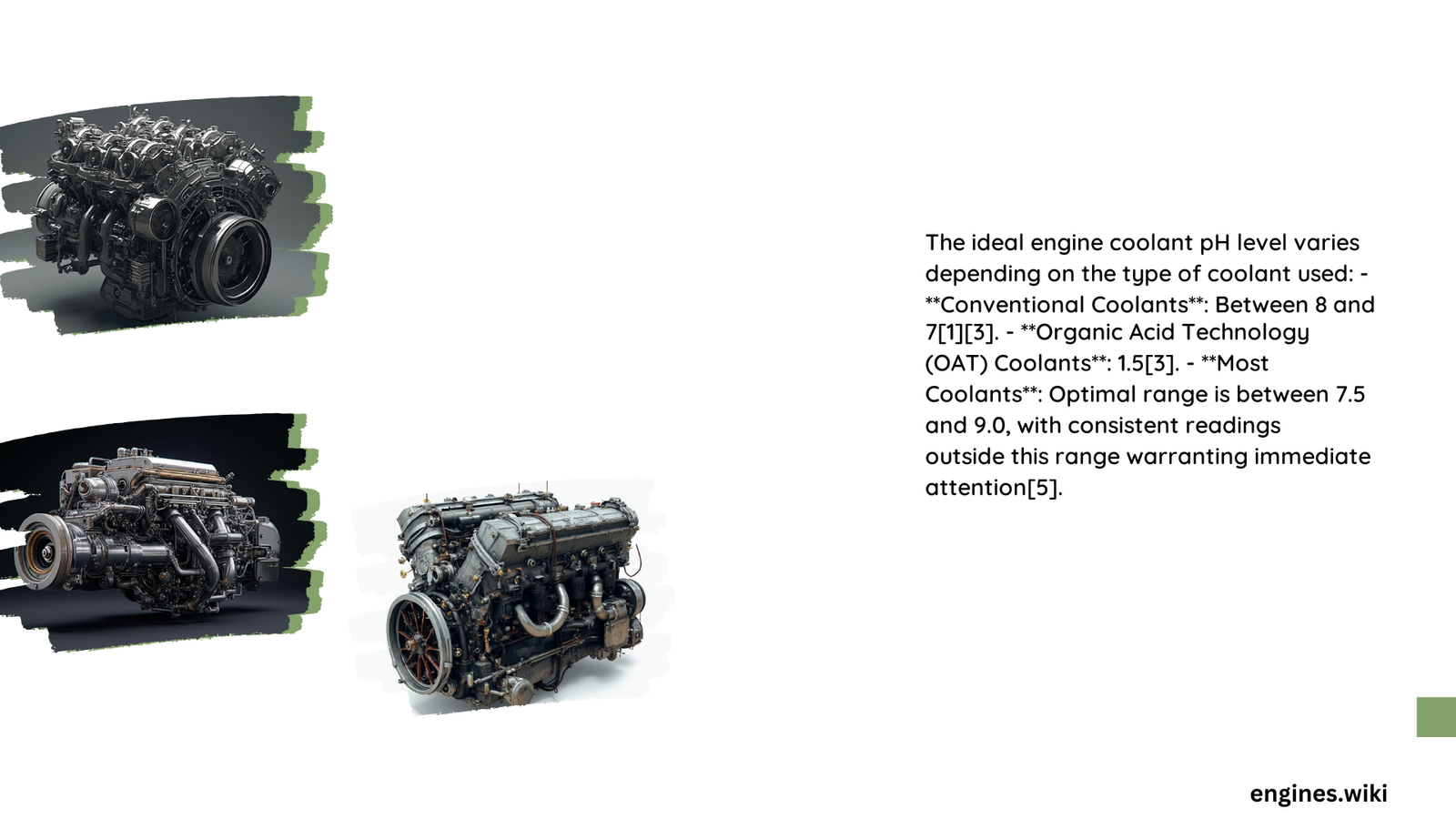Engine coolant pH level is a critical yet often overlooked aspect of vehicle maintenance that directly impacts engine performance, longevity, and corrosion prevention. Understanding the delicate balance of coolant chemistry can mean the difference between a well-functioning engine and costly mechanical failures.
What Is the Significance of Engine Coolant pH Level?
Engine coolant pH level represents the acidity or alkalinity of the cooling system fluid, which plays a crucial role in protecting metal components from corrosion and maintaining optimal thermal performance. The pH scale ranges from 0 to 14, with 7 being neutral, values below 7 indicating acidity, and values above 7 indicating alkalinity.
Why Does pH Level Matter in Engine Coolant?
| pH Range | Potential Consequences | Recommended Action |
|---|---|---|
| Below 6.5 | High corrosion risk | Immediate coolant replacement |
| 6.5 – 8.5 | Optimal protection | Regular monitoring |
| Above 8.5 | Scale formation | Coolant system flush |
How to Measure Engine Coolant pH Level?

Measuring engine coolant pH level involves several precise methods:
- pH Test Strips
- Quick and affordable
- Color-coded results
-
Readily available at auto parts stores
-
Digital pH Meters
- Provides exact numerical readings
- Requires periodic calibration
-
More expensive but highly accurate
-
Professional Diagnostic Testing
- Comprehensive coolant analysis
- Detailed report on chemical composition
- Recommended for high-performance vehicles
What Causes pH Level Fluctuations?
Several factors contribute to coolant pH level changes:
- Contamination from external sources
- Prolonged heat exposure
- Chemical breakdown of coolant additives
- Mixing incompatible coolant types
Consequences of Improper pH Levels
Corrosion Risks
- Aluminum component degradation
- Radiator wall thinning
- Water pump seal deterioration
- Increased engine wear
Performance Impact
- Reduced heat transfer efficiency
- Potential overheating
- Increased fuel consumption
- Compromised engine reliability
Best Practices for Maintaining Optimal pH Level
- Use manufacturer-recommended coolant
- Perform annual coolant system flush
- Test pH levels every 12 months
- Monitor coolant color and consistency
- Avoid mixing different coolant types
When to Replace Engine Coolant?
Replace coolant when:
– pH level falls below 6.5
– Visible contamination occurs
– Manufacturer-recommended interval expires
– Performance issues arise
Expert Recommendations
Professional mechanics suggest:
– Use distilled water for coolant mixing
– Check coolant concentration
– Inspect cooling system components regularly
– Use coolant with corrosion inhibitors
Technical Specifications
Ideal pH Range: 7.0 – 8.5
Recommended Testing Frequency: Annually
Acceptable Deviation: ±0.5 pH units
Conclusion
Maintaining the correct engine coolant pH level is not just a maintenance task—it’s an investment in your vehicle’s longevity and performance. Regular monitoring and proactive management can prevent costly repairs and ensure optimal engine health.
